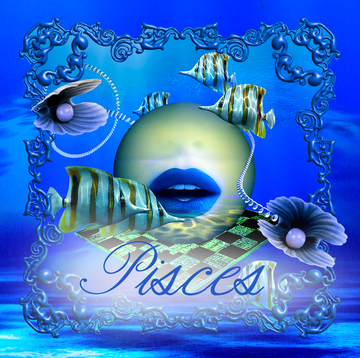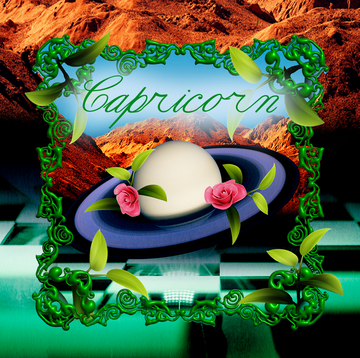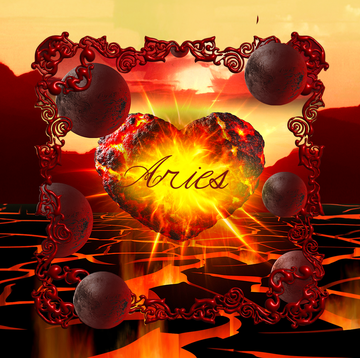As early as 12 years old, Martel Catalano displayed symptoms of retinitis pigmentosa, a degenerative retinal illness that affects just 100,000 people in the United States. The genetic condition causes night blindness, peripheral vision loss, and, in some cases, tunnel vision so advanced it renders patients legally blind.
Catalano spoke to Cosmopolitan.com about the difficulties of managing a slowly progressing chronic illness and how she spent a decade anxious about the future. Since her diagnosis, she's become a holistic life coach and yoga teacher so she could help others manage their illnesses as well.
The first time I noticed anything was off with my eyesight, I was 12 or 13 years old — which is already a really awkward time for a girl. My friends and I would be running around in the dark playing manhunt and I remember saying to my parents, “I’m really bad at this game. I think I can’t see as well as everyone else.” And they were like, “Oh, OK. Well here’s a headlamp.”
When that didn’t work, we brought it up to my eye doctor at my next visit. He took a look at my eyes and referred me to another eye specialist. Then, at the Scheie Eye Institute, they diagnosed me with retinitis pigmentosa. I go back to my doctor in Philadelphia every two years because [the] progression [of my RP] is pretty slow. I’m really fortunate in that. It’s a degenerative disease, but people who have the dominant RP gene progress quicker. Mine is recessive.
For a long time, it was only the night blindness [Ed. note: night blindness, caused by the gradual dying of the rods in ones' eyes, makes darkness much darker] that bothered me. And I think my parents didn’t tell me much about how the disease progresses on purpose. To their credit, I didn’t go looking. I didn’t want to know anything more than [the fact that] I was night-blind.
It wasn't until college that I realized another symptom [of RP] was that I was tripping over stuff a lot. It’s hard to tell if my night blindness has gotten worse, but what definitely has is my peripheral vision, especially the lower part of my periphery. Glare is also a really big side effect. I can't even [drive in the daytime] now because of the sunlight glare being so intense. And light contrast becomes an issue. If I’m in a room and someone is standing in front of a window, I really can’t see their face — it’s kind of just like a black silhouette because of the glare behind them. I’ll have to move myself around [the light] in certain situations and ask other people to do the same.
I tried to push my limits and drive when I got my license my senior year of high school, but I quickly realized this made me nervous and uncomfortable — it wasn’t the right thing to do with my vision. I haven’t ever really driven at night. That was, and still is, a major restriction.
People don’t understand how big of a deal not being able to drive is; it's this constant battle with my independence. I’m a very independent, stubborn person by nature, and when I want to go to the gym or I want to go to the grocery store or I want to go here or there and I have to ask my boyfriend for a ride — that is just a constant issue I’m dealing with. Having to only apply for jobs that I can walk to or bike to is also a challenge. I have to really rearrange my life and my livability around being able to walk to things.
The next question people always ask when I express this frustration is usually, “Why don’t you live in a big city where there’s public transportation everywhere?” Well, that’s just as challenging because of my peripheral vision. I trip on things so often that I am constantly walking into potholes and constantly not seeing a car come at me from the side, or worse — I’ve stepped on babies, I’ve stepped on dogs, and I’ve fallen into cellar doors in New York City.
I commuted into NYC from New Jersey for about 10 months in 2015 and every day I would get off the bus and walk through Port Authority to my office in fear of hurting myself just by walking down the street. And I would sit at my desk and fear leaving [at the end of the day], because it was just so scary to me. I was coming home and I was anxious and crying all the time.
Still, people think that because it’s a slow-moving condition, RP doesn’t impact your daily life. The biggest misconception is how much it impacts your emotional well-being and your stress level. [I'm dealing with] this level of constant of “Am I gonna hurt myself?” I’m not a dependent human being, but I’m relying on other people and I wonder what they will think of me when I’m in a public setting.
I had gotten such terrible looks from people even just in a coffee shop — someone’s handing me coffee and it’s below my vision line so I can't see it and they’re like looking at me like I'm a crazy person. I tend to bump into people too because my spatial awareness is really off. My depth perception is also really off, so if there are stairs or ramps or weirdly elevated things, in order to avoid tripping I have to move really slow; I kind of hang onto a wall or I grab for chairs in order to adjust to my surroundings. I'm using my hands. You look at me and because I'm not wearing weird glasses, I look like a very normal 28-year-old girl who is like anybody else, so people are sometimes like “…What is she doing?”
Now I’m an advanced yoga teacher and a certified life coach who works with people who have something that is incurable. I've completed a 200-hour teacher training program, and since then I've been doing other trainings because I realized it was my calling to use therapeutic-style yoga to help other people manage their stress. I spent the month of January this year in India studying to become a restorative yoga teacher to further help people with stress and anxiety. This was also an incredibly challenging and rewarding feat for me too. I get there and the place where I was living had these crazy, narrow stairs and I was like “Oh my god, the universe totally put me here for a reason.” Every night and early every morning, I asked for help and I held someone's hand to get down the stairs. I had to really reach out for help and not allow myself to feel vulnerable or feel defeated. That was a big triumph for me.
I've come to learn how to manage my physical health issues just by managing my stress better. I also started an online support group called Beyond My Battle meant to bring together anyone who is living with a chronic illness or disability with my friend Nell who has cystic fibrosis.
One time, when I was working in New York and my stress level was already high, I bumped into a little girl and she fell and her mom yelled at me and I immediately started crying. I haven't knocked a little girl over in a while, but if I did I know that now I would be able to manage that situation so that I wouldn't react so severely. I am proud of how I’ve learned to deal with the little things.
Invisible Illnesses is a column featuring twentysomething women who suffer from chronic illnesses. They explain their conditions, how it affects their lives, and what they wish people who have no idea they are sick would know. If you would like to be interviewed about your experience with a different invisible illness, email tkoman@hearst.com. Read previous installments of the column here.
Follow Tess on Twitter.
Tess Koman covers breaking (food) news, opinion pieces, and features on larger happenings in the food world. She oversees editorial content on Delish. Her work has appeared on Cosmopolitan.com, Elle.com, and Esquire.com.

















